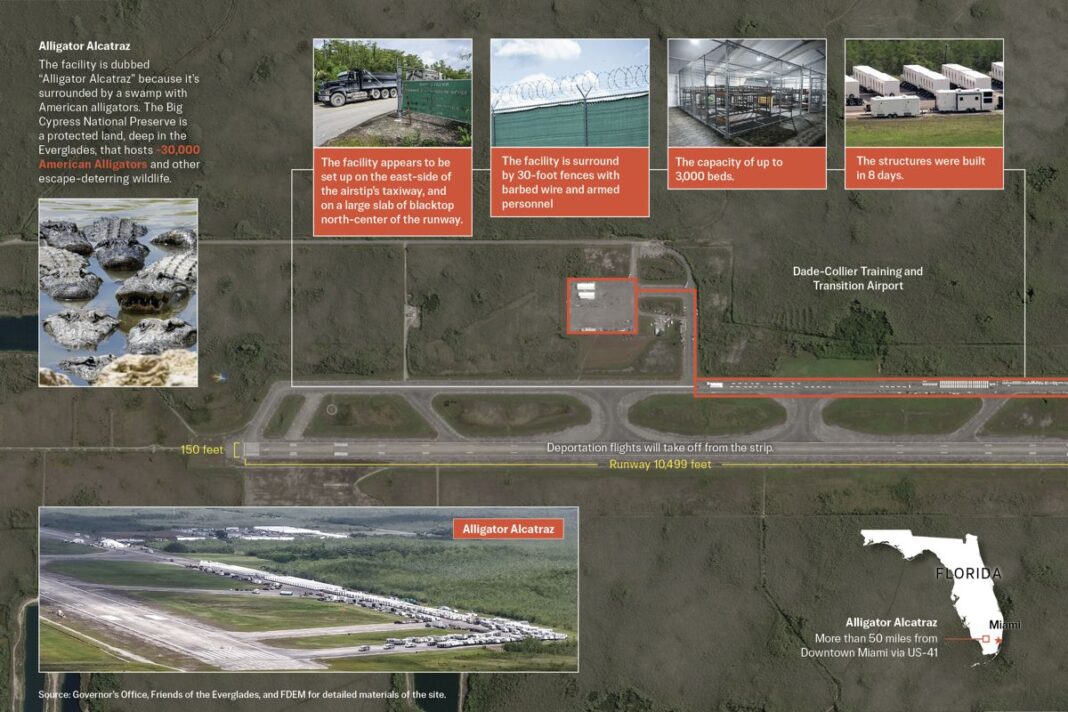‘It’s a one-stop shop, and this airport that’s been here for a long time is the perfect secure location. It’s going to make a big difference,’ DeSantis said.
Deep in the Florida Everglades, the latest illegal immigration detention and deportation facility opened for business on July 1, eight days after state officials said work began.
A cluster of temporary structures large enough to hold up to 3,000 illegal immigrants and 1,000 staff members now stands next to a runway 10,499 feet long and 150 feet wide. The facility was paid for largely by the Department of Homeland Security.
“Think about what you have here,” Florida Gov. Ron DeSantis said during a roundtable at the facility’s opening on July 1. ”They come here, say they have already been ordered to be deported. You drive them 2,000 feet to the runway, and they’re gone.
“It’s a one-stop shop, and this airport that’s been here for a long time is the perfect secure location. It’s going to make a big difference.”
Management, celebrated the opening as yet another example of Florida’s “logistical expertise” to rapidly respond to an emergency, adapting what they learned from rebuilding infrastructure after hurricanes to this project.
DeSantis declared a state of emergency regarding illegal immigration earlier this year, granting Guthrie emergency powers to take over the airfield from Miami-Dade County and kickstart the construction.
“There are over 13 different vendors that came together to get this solved in eight days, truly a whole of private sector partnership to get that done,” Guthrie said during the roundtable. ”Behind you on these boards, in only eight days, we have built a fully compliant detention facility with a detainee capacity of up to 3,000 people, with room for additional capacity, if you asked us to do so, the detention includes over 158,000 square feet of housing, and it’s a fully aluminum frame structure rated for winds of 110 miles an hour, or a high-end Category 2.”
The facility is also equipped with a staff village, redundant power systems, air conditioning, the capacity to serve three hot meals a day, a 24/7 medical facility, pharmacy, laundry, legal and clergy support, and indoor and outdoor recreation yards.
By T.J. Muscaro








